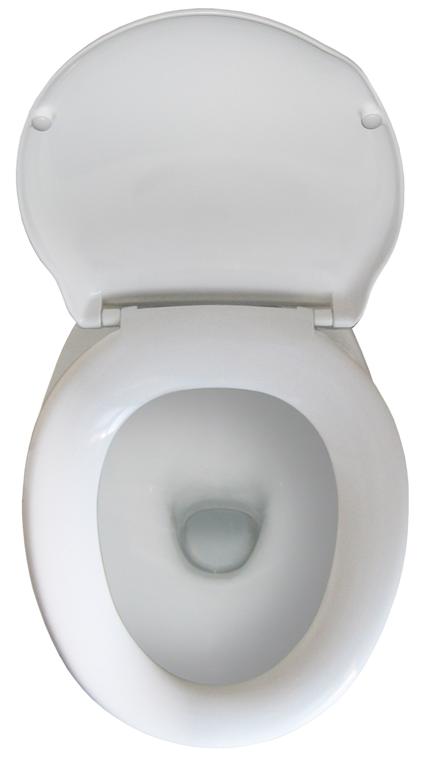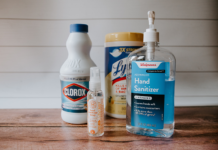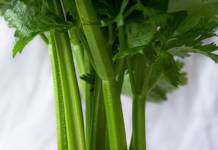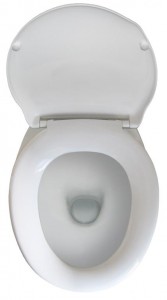 Ice cubes are often referred to as “the forgotten food.” This is because millions of restaurant workers do not treat ice with the same caution as they do some of the other food products they serve. According to a study published by The Daily Mail, restaurant ice cubes contain more bacteria than toilet water! Pretty disturbing stuff considering most restaurant beverages are served with ice.
Ice cubes are often referred to as “the forgotten food.” This is because millions of restaurant workers do not treat ice with the same caution as they do some of the other food products they serve. According to a study published by The Daily Mail, restaurant ice cubes contain more bacteria than toilet water! Pretty disturbing stuff considering most restaurant beverages are served with ice.
Fecal matter and other hazardous contaminates have been found lurking in ice cubes and ice machines at many restaurants. Though this hygienic risk has been seen as disgusting, it is not being considered a public health threat. I’m not so sure. Just because you’re not dropping dead the minute you consume a beverage doesn’t mean it can’t be a serious threat to your health.
Depending on the bacteria or virus, symptoms may not occur until several days later. This makes it difficult to track outbreaks. Many folks who think they have the “stomach flu” actually have food poisoning.
Dangerous Contaminants in Your Favorite Restaurant Beverage
Fecal Matter
Restaurant ice cubes have been proven to contain coliform bacteria. Coliforms are gram-negative non-spore forming bacterium found in human feces. They are the most common bacterial indicator of the sanitary conditions in restaurants, bars, and other food-serving establishments. A team of microbiologists from Hollins University confirmed that up to 48% of restaurant soda fountains are contaminated with coliform bacteria. Yuck!
Staph
Staphylococcus aureus (S. aureus or “staph”) infections can cause soft tissue infections such as abscesses and cellulitis. Methicillin-resistant Staphylococcus Aureus (MRSA), the more serious form of staph, can also be transmitted via contaminated restaurant ice. If left untreated, this type of staph infection can be fatal.
Norovirus
The Norovirus is the most common cause of gastroenteritis in the United States. Though rarely fatal, it is easily passed from person to person via handshakes, improper food handling, and contaminated ice. Symptoms of Norovirus infection include low-grade fever, chills, nausea, vomiting, watery diarrhea, headache, muscle aches, and extreme fatigue. No antibiotic or antiviral drug can treat Norovirus. It just has to run its course on its own. This is the one you hear about most often in connection with cruise ships.
Salmonella
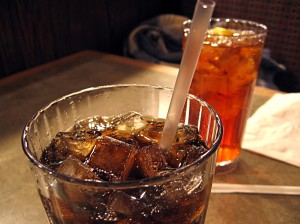
Salmonella is the most common cause of foodborne illness and can be easily transmitted via contaminated food, water or ice. In most cases, salmonella affects only the gastrointestinal system, causing nausea, vomiting, and diarrhea that usually resolves in four to seven days. In some cases, however, salmonella can enter the bloodstream causing sepsis. Salmonella infection can also lead to the development of an autoimmune disease called Reiter’s syndrome, a type of arthritis.
E. Coli O157:H7
E. coli infection is one of the more common causes of food poisoning and is commonly spread through fecal contamination in food, water or ice. This bacteria is classified as a fecal coliform. Although there are many types of E. coli, the most infamous is O157:H7. This can be found on ice through cross-contamination from uncooked/undercooked beef, unpasteurized milk and juice, and raw vegetables which have not been washed. This strain of E. coli produces Shiga toxin and is known as Shiga toxin-producing E. coli (STEC). There are many other types of STEC, and some can make you just as sick as E. coli O157:H7. Symptoms of E. coli infection include bloody diarrhea, stomach cramps, and vomiting. In rare cases, E. coli can even be life-threatening, causing hemolytic uremic syndrome (HUS).
Also alarming: Most of the bacteria identified in the Daily Mail study showed resistance to one or more of the 11 antibiotics tested!
Slime in the Ice Machine
 In addition to the fact that nearly 50% of restaurant ice is contaminated with fecal matter, there’s the added health risk of a possibly filthy ice machine. Many ice and soda machines are not cleaned nearly often enough, which means they quickly begin to gather a thick layer of bacteria, mold, and fungus that drips down into your favorite beverage.
In addition to the fact that nearly 50% of restaurant ice is contaminated with fecal matter, there’s the added health risk of a possibly filthy ice machine. Many ice and soda machines are not cleaned nearly often enough, which means they quickly begin to gather a thick layer of bacteria, mold, and fungus that drips down into your favorite beverage.
If this unattractive combination is left to linger in the ice machine, it eventually turns into pinkish slime. After that, it turns to red, then green, and brown, and eventually black. Pretty soon, thick ropes of black slime hang from the freezer panels and drip small amounts of gunk into your drink. Not at all appetizing, is it?
Millions of People Have Compromised Immune Systems
Oftentimes, the health risks of something as seemingly mundane as contaminants in restaurant ice cubes or ice machine bacteria and molds are downplayed with the phrase, “those with a compromised immune system.”
The sad fact is, a compromised immune system is much more common than not. This is accomplished quite well for us with all of the synthetic chemicals in our food, air, and water.
Symptoms of a compromised immune system include:

- Frequent Cold and Flu Infections
- Chronic Sinusitis
- Yeast Infections
- Cold/Canker Sores
- Fatigue
- Gastrointestinal Disorders
- Slow Wound Healing
How to Boost Your Immune System Naturally
The best way to avoid any foodborne illness is to boost your immune system naturally. This way, even if you do come into contact with a potentially-harmful bacterium or virus, your chances of becoming severely ill will be greatly diminished.
To boost your immune system, I recommend the following:
Dietary Changes
The cornerstone of good health is a nutrient-rich diet. If you’re not eating well, you’ll be much more susceptible to disease. The more organic vegetables, fruits, beans, seeds, legumes, meat, poultry, fish, and healthy fats (butter, coconut oil) you consume, the healthier you’ll be in the long run.
However, if you eat a diet of primarily processed foods, I don’t recommend just giving them up cold turkey. Junk food contains synthetic chemicals that act as an addictive drug to your brain. Completely changing your diet overnight can cause withdrawal symptoms. Instead, slowly taper off junk food, trading those favorite snacks in for healthier fare one day at a time.
High-Grade Multivitamins and Minerals
If you’re already taking a multivitamin/mineral supplement, I recommend reading the label carefully. Many store-bought vitamin supplements contain numerous additives. My formula, Diamond Nutritional’s Foundation Vitamins, offers high-grade, immune-boosting nutrition you can trust.
These nutrients include:
Vitamin A – 7,500 IU
Vitamin C – 500 mg
Vitamin D3 – 500 IU
Vitamin E – 100 IU
Vitamin K – 50 mcg
Thiamine – 25 mg
Riboflavin – 25 mg
Niacin – 25 mg
Vitamin B6 – 38 mg
Folic Acid – 400 mcg
Vitamin B12 – 500 mcg
Biotin – 200 mcg
Panthothenic Acid – 150 mg
Calcium – 100 mg
Iodine – 113 mcg
Magnesium – 200 mg
Zinc – 10 mg
Selenium – 100 mcg
Copper – 1 mg
Manganese – 2.5 mg
Chromium – 200 mcg
Molybdenum – 25 mcg
Potassium – 50 mg
Choline Bitartrate USP – 50 mg
Inositol – 50 mg
Mixed Tocopherols – 50 mg
Lipoic Acid – 25 mg
N-Acetyl-Cysteine USP – 25 mg
Rutin – 25 mg
Lutein – 3 mg
Boron – 1.5 mg
Lycopene – 1 mg
Vanadyl Sulfate Hydrate – 1 mg
There’s no reason to stay home and avoid restaurants altogether to stay safe. However, it is important to choose dining establishments that are more aware of hygienic practices. How clean the bathroom is also happens to be a good indicator of how clean the kitchen is!
You have a right to know what’s in your food and drink. Don’t be afraid to ask questions. Besides, the more people ask, the more restaurants will comply with safer practices. This means you’re not only protecting yourself and your family but those patrons who dine after you. And that’s a great way to encourage positive change!





